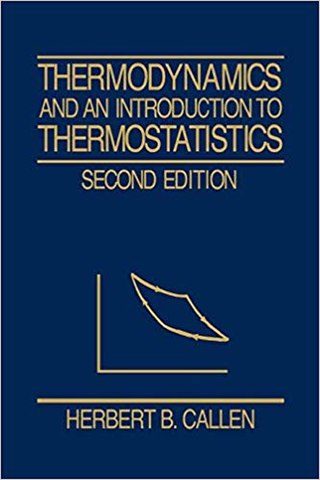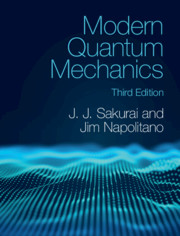
In quantum field theory, the Casimir effect, also known as the Casimir force, is a physical force acting on the macroscopic boundaries of a confined space which arises from the quantum fluctuations of the field. It is named after the Dutch physicist Hendrik Casimir, who predicted the effect for electromagnetic systems in 1948.

Newton's laws of motion are three basic laws of classical mechanics that describe the relationship between the motion of an object and the forces acting on it. These laws can be paraphrased as follows:
- A body remains at rest, or in motion at a constant speed in a straight line, unless acted upon by a force.
- When a body is acted upon by a force, the time rate of change of its momentum equals the force.
- If two bodies exert forces on each other, these forces have the same magnitude but opposite directions.

Zero-point energy (ZPE) is the lowest possible energy that a quantum mechanical system may have. Unlike in classical mechanics, quantum systems constantly fluctuate in their lowest energy state as described by the Heisenberg uncertainty principle. Therefore, even at absolute zero, atoms and molecules retain some vibrational motion. Apart from atoms and molecules, the empty space of the vacuum also has these properties. According to quantum field theory, the universe can be thought of not as isolated particles but continuous fluctuating fields: matter fields, whose quanta are fermions, and force fields, whose quanta are bosons. All these fields have zero-point energy. These fluctuating zero-point fields lead to a kind of reintroduction of an aether in physics since some systems can detect the existence of this energy. However, this aether cannot be thought of as a physical medium if it is to be Lorentz invariant such that there is no contradiction with Einstein's theory of special relativity.

In quantum field theory, the quantum vacuum state is the quantum state with the lowest possible energy. Generally, it contains no physical particles. The term zero-point field is sometimes used as a synonym for the vacuum state of a quantized field which is completely individual.
Stochastic electrodynamics (SED) is a variant of classical electrodynamics (CED) of theoretical physics. SED consists of a set of controversial theories that posit the existence of a classical Lorentz invariant radiation field having statistical properties similar to that of the electromagnetic zero-point field (ZPF) of quantum electrodynamics (QED).

Wolfgang Rindler was a physicist working in the field of general relativity where he is known for introducing the term "event horizon", Rindler coordinates, and for the use of spinors in general relativity. An honorary member of the Austrian Academy of Sciences and foreign member of the Accademia delle Scienze di Torino, he was also a prolific textbook author.

Nathaniel David Mermin is a solid-state physicist at Cornell University best known for the eponymous Mermin–Wagner theorem, his application of the term "boojum" to superfluidity, his textbook with Neil Ashcroft on solid-state physics, and for contributions to the foundations of quantum mechanics and quantum information science.

Classical Mechanics is a textbook about that subject written by Herbert Goldstein, a professor at Columbia University. Intended for advanced undergraduate and beginning graduate students, it has been one of the standard references in its subject around the world since its first publication in 1950.

In cosmology, the cosmological constant problem or vacuum catastrophe is the disagreement between the observed values of vacuum energy density and theoretical large value of zero-point energy suggested by quantum field theory.
Stochastic quantum mechanics is an interpretation of quantum mechanics.

The QED vacuum or quantum electrodynamic vacuum is the field-theoretic vacuum of quantum electrodynamics. It is the lowest energy state of the electromagnetic field when the fields are quantized. When Planck's constant is hypothetically allowed to approach zero, QED vacuum is converted to classical vacuum, which is to say, the vacuum of classical electromagnetism.
Peter Walden Milonni is an American theoretical physicist who deals with quantum optics, laser physics, quantum electrodynamics and the Casimir effect.
The quantum vacuum state or simply quantum vacuum refers to the quantum state with the lowest possible energy.

Classical Electrodynamics is a textbook about that subject written by theoretical particle and nuclear physicist John David Jackson. The book originated as lecture notes that Jackson prepared for teaching graduate-level electromagnetism first at McGill University and then at the University of Illinois at Urbana-Champaign. Intended for graduate students, and often known as Jackson for short, it has been a standard reference on its subject since its first publication in 1962.

Quantum Computation and Quantum Information is a textbook about quantum information science written by Michael Nielsen and Isaac Chuang, regarded as a standard text on the subject. It is informally known as "Mike and Ike", after the candies of that name. The book assumes minimal prior experience with quantum mechanics and with computer science, aiming instead to be a self-contained introduction to the relevant features of both. The focus of the text is on theory, rather than the experimental implementations of quantum computers, which are discussed more briefly.

Thermodynamics and an Introduction to Thermostatistics is a textbook written by Herbert Callen that explains the basics of classical thermodynamics and discusses advanced topics in both classical and quantum frameworks. It covers the subject in an abstract and rigorous manner and contains discussions of applications. The textbook contains three parts, each building upon the previous. The first edition was published in 1960 and a second followed in 1985.

Introduction to Quantum Mechanics, often called Griffiths, is an introductory textbook on quantum mechanics by David J. Griffiths. The book is considered a standard undergraduate textbook in the subject. Originally published by Pearson Education in 1995 with a second edition in 2005, Cambridge University Press (CUP) reprinted the second edition in 2017. In 2018, CUP released a third edition of the book with Darrell F. Schroeter as co-author; this edition is known as Griffiths and Schroeter.

Modern Quantum Mechanics, often called Sakurai or Sakurai and Napolitano, is a standard graduate-level quantum mechanics textbook written originally by J. J. Sakurai and edited by San Fu Tuan in 1985, with later editions coauthored by Jim Napolitano. Sakurai died in 1982 before he could finish the textbook and both the first edition of the book, published in 1985 by Benjamin Cummings, and the revised edition of 1994, published by Addison-Wesley, were edited and completed by Tuan posthumously. The book was updated by Napolitano and released two later editions. The second edition was initially published by Addison-Wesley in 2010 and rereleased as an eBook by Cambridge University Press, who released a third edition in 2020.














